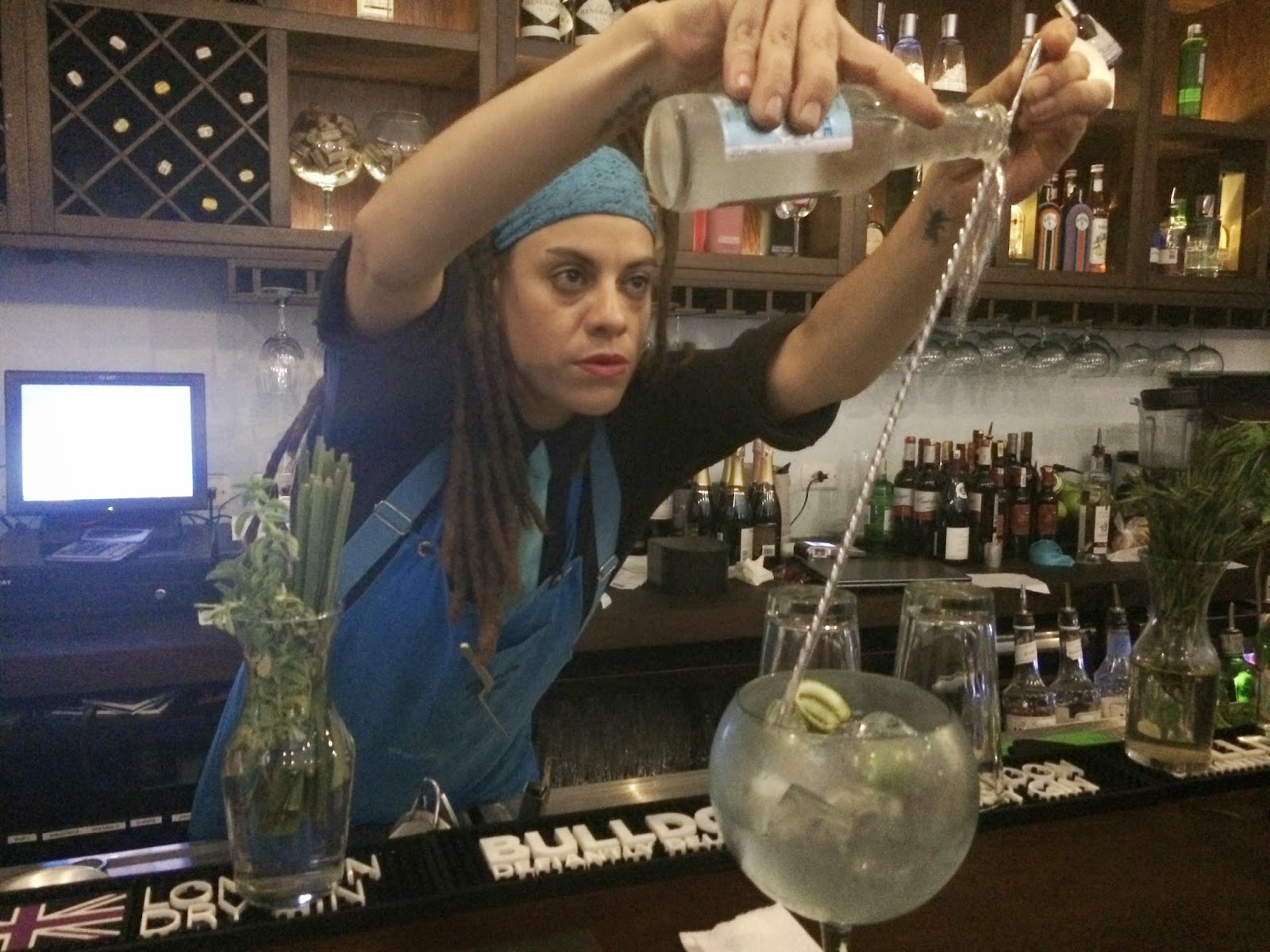Like everywhere else in South America, vegetarianism isn't particular popular in Colombia and most traditional fare involves some kind of meat or fish. However, with a little shopping around, you can find vegetarian friendly Colombian food. And of course, in the bigger cities of Bogotá, Medellín and Cartagena there are also a range of international options.
Here's what we ate:
Colombian food
1. Arepas: An ubiquitous lunchtime snack or side dish in Colombia, arepas are a type flatbread, made with a pre-cooked cornflour. They come with different types of filling and topping, some with and some without meat. I particularly enjoyed the arepas de choclo, made with sweetcorn, giving them a creamy taste.
 |
| Favourite arepa stand in Cartagena |
The cheese arepas are also very tasty - some come stuffed with cheese, others with slices of cheese on top.
 |
| Arepa at farmer's market in Medellin |
2. Patacones: Green plantains are fried twice to turn them into a tortilla chip style snack, known as patacones. On a weekend in Salento, market stands in the main square sell trout from the local rivers. For veggies, the stands also serve up a lunch of patacones covered with cheese and mushrooms, which was surprisingly filling (although perhaps not the most exciting dish!). You can also find patacones served in a similar way to tortilla chips with guacamole or hot salsa.
 |
| Mushroom and cheese patacones |
3. Changua: This light refreshing soup, made with milk, egg and coriander (cilantro) is generally eaten for breakfast and is also apparently a good hangover cure. I was initially quite skeptical when I saw it on the breakfast menu in a cafe in San Gil, but it was a warming breakfast that set me up for the day.
 |
| Yes. Soup. For breakfast |
There are so many different exotic varieties, the likes of which are very hard to find elsewhere from tomate de arbol (tree tomato) to cherimoya (custard apple - which is exactly what it tastes like) to algarroba, known colloquially as stinky toe!
In Medellín, we went on a a fruit tour of a local market to sample the range of fruits that Colombia has to offer. My new favourite fruit became maracuya, a type of passionfruit, which had a tart, but fresh taste.
5. Quinoa: We actually didn't see that much quinoa on the menus in Colombia while we were there, but you can find it if you look for it. I very much enjoyed the comfort of the quinoa burger we found in Radio Burger in Santa Marta, served up with a tasty crisp Bogotá Beer Company beer!
1. Tasty fare in La Candelaria in Bogotá: At lunchtime in Bogotá, I was pleased to find small cafes in the Candelaria area, serving humus, falafal and the like. This was probably the first humus, I'd had for 6 months and it was delicious. There are a lot of meat only options in the area, but walk around and you'll find some gems with some good veggie options. Don't forget to use Happy Cow if you're struggling.
 |
| HUMUS! |
2. Crepes and waffles: This Colombian restaurant chain runs over 70 restaurants across the country and operates in a number of other South American countries. We went to the French style creperie chain in Poblado, Medellín and found it served up a range of delicious veggie crepe options, as well as humongous desserts. In addition, as well as tasty meals, this place comes with a conscience - it only employs single mums.
 |
| Mammouth dessert at Crepes and Waffles |
4. Babaganoush in Taganga: This place gets a special mention as we literally had the best meal in Colombia here. The restaurant has an amazing view over the bay - get here for sunset to have a beer or cocktail while the sun goes down. The menu here isn't huge, but there are a couple of delicious veggie options - try the pumpkin soup!
5. A range of options in Cartagena: Cartagena has a large number of options of different types of international food from curry to tapas to Mediterranean for all budget sizes. If you want a bit of a splash out, Agua de Mar is a must visit. This specialist gin and tapas restaurant was probably more of a find for the specialist and personalised gin and tonics they served up than the food, although that was yummy too.
 |
| My gin and tonic being concocted - it's a serious business |
A cheaper option in Cartagena is El Balcón, where I had humus and a veggie wrap.
While wandering the hot streets of Cartagena, do also pop in to one of the ice lolly shops to get yourself a cooling snack. Because of the range of exotic fruits available in Colombia, there is a huge range of flavours to enjoy!
Related links:
Being Vegetarian in Peru
Being Vegetarian in Bolivia
Being Vegetarian in Chile
Being Vegetarian in Argentina
Being Vegetarian in Brazil






No comments:
Post a Comment